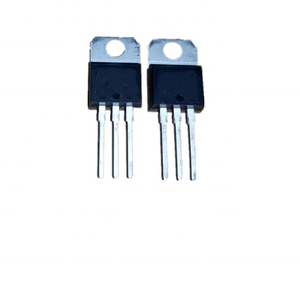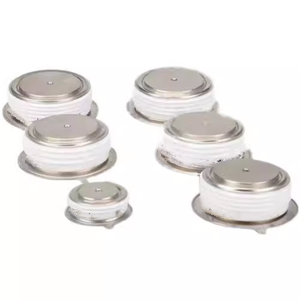Thyristors Online | High-Quality Power Semiconductors
Title: SCR vs. Thyristor: Are They Secretly the Same Beast?
(Is Scr And Thyristor Are Same)
Main Product Keywords: SCR, Thyristor
1. What Exactly Are SCRs and Thyristors?
Let’s get straight to the point. An SCR, which stands for Silicon Controlled Rectifier, is a type of semiconductor device. Think of it as a super-reliable electronic switch. But it’s not just any switch; it controls the flow of electrical current in one direction only. Now, the term “thyristor” often pops up too. This is where things get interesting. A thyristor is actually the broader family name. SCR is the most common, most famous member of this thyristor family. It’s like saying “car” versus “sedan.” All sedans are cars, but not all cars are sedans. Similarly, all SCRs are thyristors, but not all thyristors are necessarily SCRs. The thyristor family includes other types like TRIACs and DIACs, but the SCR is the classic, the workhorse. Its basic structure involves three terminals: Anode, Cathode, and Gate. The Gate is the key; a small signal here tells the SCR when to start conducting electricity. Without that gate signal, the SCR stays off, blocking current flow. Understanding this core function is crucial.
2. Why Does the Confusion Between SCR and Thyristor Happen?
The mix-up is incredibly common, and there’s a simple reason. People use “thyristor” and “SCR” interchangeably all the time, especially in everyday conversation and even in many technical documents. Why? Because the SCR is overwhelmingly the most widely used thyristor type. When someone says “thyristor,” nine times out of ten, they mean an SCR. It’s the star player, so the team name gets used for the star. Imagine asking for a cola and getting a Coke; it’s similar. This casual swapping of terms is everywhere. You’ll see it in datasheets, repair manuals, and casual engineering chats. Also, the term “thyristor” itself sounds quite technical and specific. It feels natural to use it for the specific device you’re holding, which is usually an SCR. So, the confusion stems mostly from common practice and the SCR’s dominance. It’s less about technical inaccuracy and more about linguistic shorthand. Knowing this helps avoid unnecessary arguments.
3. How Does an SCR (Thyristor) Actually Work?
Think of an SCR like a sturdy door for electricity. Normally, this door is locked shut. No current flows from the Anode to the Cathode. The key to unlocking it is a small voltage pulse applied to the Gate terminal. This pulse “latches” the door open. Once open, the door stays open. Current flows freely from Anode to Cathode. Here’s the critical part: the gate signal only tells it to start conducting. It doesn’t control the amount of current or tell it to stop. The SCR keeps conducting until the current flowing through it drops below a tiny minimum value, called the holding current. This usually happens when the main power supply voltage drops to zero or reverses direction (like at the end of an AC cycle). The SCR then resets, and the door slams shut again. It waits patiently for the next gate pulse to unlock it. This latching behavior makes SCRs perfect for controlling large amounts of power with a tiny signal, but it also means you need to design the circuit carefully to ensure it turns off when required.
4. Where Do We Use SCRs (Thyristors) in the Real World?
SCRs are power control superstars. You find them hidden inside many devices making modern life work. One major area is controlling electric motors. Need variable speed for a power drill, a fan, or a huge industrial conveyor belt? SCR-based circuits are often doing the heavy lifting, adjusting the power delivered to the motor smoothly. Another huge application is lighting control. Those fancy dimmer switches that let you set the mood in a room? Many use SCRs to chop up the AC power waveform, reducing the average power going to the bulb and dimming the light. Power supplies, especially big ones converting AC to DC for factories or battery charging, heavily rely on SCRs for efficient rectification and regulation. They manage the enormous power flow. Even in renewable energy, SCRs help manage the power coming from sources like wind turbines before feeding it into the grid. Essentially, anywhere you need precise, robust control of significant electrical power, especially AC power, SCRs are likely involved.
5. SCR and Thyristor FAQs: Clearing Up the Fog
Let’s tackle some common questions head-on.
Is an SCR exactly the same as a thyristor? Mostly, but not strictly. SCR is the specific, most common type. Thyristor is the general family name. Using “thyristor” to mean SCR is very common practice.
Can an SCR turn itself off? No. Once triggered by the gate pulse, an SCR stays conducting (“latches on”) until the main current drops below its holding current. External circuit conditions force it off.
Why use an SCR instead of a simple switch or relay? SCRs are solid-state. They have no moving parts, so they last longer, switch incredibly fast (thousands of times per second), handle huge currents quietly, and don’t spark. Relays are slow and wear out.
What’s the main disadvantage of SCRs? That latching behavior. They conduct until the current stops. This can be tricky in DC circuits where current doesn’t naturally drop to zero. Special “forced commutation” circuits are needed to turn them off in DC.
Are TRIACs and DIACs also thyristors? Yes. TRIACs are like two SCRs back-to-back, allowing them to control AC in both directions. DIACs are often used to trigger the gate of TRIACs or SCRs. They are all part of the thyristor family tree.
(Is Scr And Thyristor Are Same)
Do SCRs get hot? Yes, when conducting current, they have a voltage drop (around 1-2 volts). This causes power loss as heat, especially at high currents. They often need heatsinks to stay cool.


